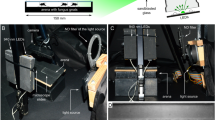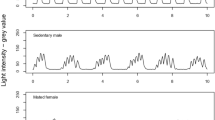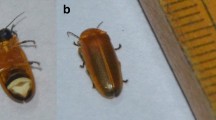Abstract
I HAVE earlier postulated1,2 a completely new concept of the insect environment based on infra-red frequency transmission through infra-red atmospheric windows. This concept involves the utilization of such transmitted frequencies in the life cycle and behaviour of night-flying moths. I postulated that moths may locate their mates, chemical releasers (scents), and host plants by means of infra-red frequency detection and that the night-adapted eye of nocturnal moths shifts slowly from the short-wave visible spectrum of daylight to the longer and longer infra-red frequencies as it becomes night-adapted. When totally dark-adapted, it attains the configuration of a mosaic optic-electromagnetic thermal radiometer for night-time detection of infra-red frequencies. I further postulated that the antennal spines may be resonant cavities for infra-red detection. Laithwaite3 has postulated a similar theory for the assembling of moths. In testing the validity that a moth might locate its mate by thermal far infra-red, the following experiments were performed:
This is a preview of subscription content, access via your institution
Access options
Subscribe to this journal
Receive 51 print issues and online access
$199.00 per year
only $3.90 per issue
Buy this article
- Purchase on Springer Link
- Instant access to full article PDF
Prices may be subject to local taxes which are calculated during checkout
Similar content being viewed by others
References
Callahan, P. S., paper read at the XII Int. Cong. Entomology, 1964 (in the press).
Callahan, P. S. (in preparation).
Laithwaite, E. R., Entomologist, 93, 113, 133 (1960).
Author information
Authors and Affiliations
Rights and permissions
About this article
Cite this article
CALLAHAN, P. Far Infra-red Emission and Detection by Night-flying Moths. Nature 206, 1172–1173 (1965). https://doi.org/10.1038/2061172a0
Issue Date:
DOI: https://doi.org/10.1038/2061172a0
Comments
By submitting a comment you agree to abide by our Terms and Community Guidelines. If you find something abusive or that does not comply with our terms or guidelines please flag it as inappropriate.



